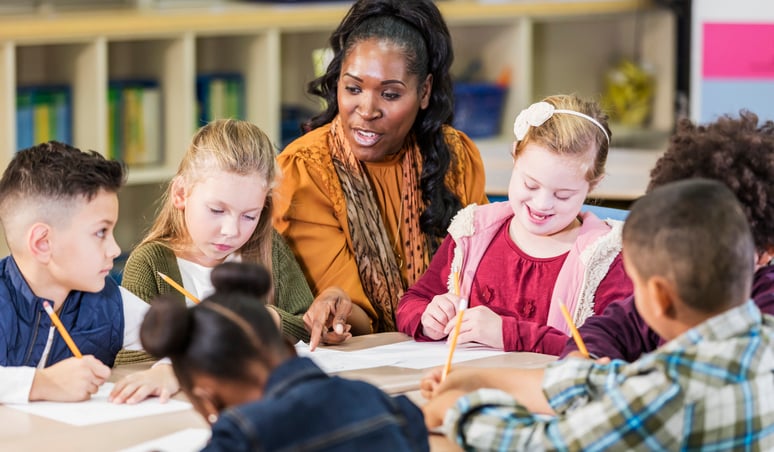By examining the "Practices" component through the lens of the 5P Framework, education leaders can gain valuable insights into the strengths and weaknesses of their current approaches. This process of reflection and evaluation is essential for identifying areas where practices may need to be refined, adapted, or even completely reimagined to better meet the needs of diverse learners. It is through this ongoing cycle of assessment and improvement that special education programs can truly transform the educational experience for students with disabilities.
In this article, we will explore the key elements of the "Practices" component, delving into research-based strategies and real-world examples of how effective practices can make a profound difference in the lives of students. From differentiated instruction and universally designed learning environments to positive behavior support and collaborative teaming, we will examine the practices that are essential for creating inclusive, equitable, and empowering special education programs. So, whether you are a seasoned special education director or a curriculum coordinator looking to take your program to the next level, read on to discover how the "Practices" component of the 5P Framework can help you transform your approach and unlock the potential of every learner.

The 5P Framework: Putting Practices in the Spotlight
The 5P Framework provides a comprehensive approach to evaluating and enhancing special education programs, with "Practices" serving as one of the five key components. By examining factors such as instructional strategies, behavioral interventions, progress monitoring, and collaborative planning, curriculum directors and special education administrators can identify areas for improvement and develop targeted strategies to enhance their practices.
When assessing the "Practices" component, consider the following critical elements:
- Instructional Strategies
- Are evidence-based instructional practices being used to support student learning?
- Do educators employ differentiated instruction and Universal Design for Learning (UDL) principles to meet the diverse needs of learners?
- Are there opportunities for individualized and small group instruction to target specific skill areas?
- Behavioral Interventions
- Are positive behavior support strategies being implemented consistently across the program?
- Do educators use data-driven approaches to identify and address behavioral challenges?
- Are there systems in place for providing individualized behavioral support and interventions?
- Progress Monitoring
- Are there established procedures for regularly monitoring student progress toward IEP goals?
- Do educators use a variety of assessment methods and data sources to inform instructional decisions?
- Are progress monitoring data used to adjust interventions and supports as needed?
- Collaborative Planning
- Do special education and general education teachers have regular opportunities to collaborate and co-plan?
- Are families and related service providers actively involved in the planning process?
- Are there systems for facilitating ongoing communication and collaboration among all members of the educational team?
By thoroughly examining these aspects of the "Practices" component, education leaders can identify areas where their approaches may need refinement, leading to more effective and impactful special education services.

Instructional Strategies: Empowering Diverse Learners
At the core of effective special education practices are instructional strategies that are designed to meet the diverse needs of learners. By employing a range of evidence-based approaches, educators can create learning environments that are both inclusive and empowering. To enhance instructional practices, consider the following strategies:
- Differentiated Instruction
- Provide multiple pathways for students to access, engage with, and demonstrate their understanding of content
- Use ongoing assessment data to inform instructional decisions and tailor approaches to individual student needs
- Incorporate a variety of instructional formats, such as direct instruction, small group work, and independent practice
- Universal Design for Learning (UDL)
- Design learning experiences that are flexible, equitable, and accessible to all learners
- Provide multiple means of representation, expression, and engagement to support diverse learning styles and preferences
- Use technology and other tools to remove barriers and enhance access to curriculum and instruction
- Individualized and Small Group Instruction
- Provide targeted instruction and support to address specific skill deficits or areas of need
- Use data-driven decision making to group students based on shared instructional needs
- Incorporate evidence-based interventions and strategies to accelerate learning and close achievement gaps
- Explicit Instruction
- Use clear, direct, and systematic instructional approaches to teach critical skills and concepts
- Break complex tasks into smaller, more manageable steps and provide ample opportunities for practice and feedback
- Model strategies and thought processes to support student understanding and application
By prioritizing effective instructional practices, special education programs can create learning environments that are responsive to the unique needs of each student, fostering academic growth and success.
Behavioral Interventions: Supporting Positive Outcomes
In addition to effective instructional practices, special education programs must also prioritize positive behavior support and intervention strategies. By taking a proactive and data-driven approach to behavior management, educators can create learning environments that are safe, supportive, and conducive to student success. To strengthen behavioral intervention practices, consider the following strategies:
- Positive Behavior Support (PBS)
- Implement a school-wide approach to promoting positive behavior and preventing problem behaviors
- Teach and reinforce clear expectations and routines to create a predictable and supportive learning environment
- Use positive reinforcement strategies to acknowledge and celebrate student success
- Functional Behavior Assessments (FBA)
- Conduct thorough assessments to identify the underlying functions of challenging behaviors
- Use FBA data to develop individualized behavior intervention plans that address the root causes of behavior
- Monitor and adjust intervention plans based on ongoing data collection and analysis
- Social-Emotional Learning (SEL)
- Integrate SEL strategies into daily instruction and interactions to support the development of key social and emotional skills
- Provide explicit instruction in areas such as self-awareness, self-management, social awareness, relationship skills, and responsible decision-making
- Foster a positive and inclusive school culture that values diversity and promotes empathy and respect
- Trauma-Informed Practices
- Recognize the impact of trauma on student learning and behavior
- Implement trauma-sensitive strategies to create a safe and supportive learning environment
- Provide training and support for staff to understand and respond effectively to the needs of students who have experienced trauma
By prioritizing effective behavioral intervention practices, special education programs can support the social-emotional well-being of all students and create learning environments that are conducive to academic and personal growth.

Conclusion
The "Practices" component of the 5P Framework serves as a powerful reminder that the day-to-day actions of educators have a profound impact on the lives of students with disabilities. By focusing on effective instructional strategies, positive behavior support, progress monitoring, and collaborative planning, special education leaders can transform their programs into dynamic, student-centered learning communities.
However, the journey to effective practices is not a one-time destination, but rather an ongoing process of reflection, refinement, and growth. By consistently evaluating and adapting their approaches, special education teams can ensure that their practices remain responsive to the ever-evolving needs of their students. This commitment to continuous improvement is the hallmark of truly exceptional special education programs.
Ultimately, the power of effective practices lies in their ability to unlock the potential of every learner. By creating learning environments that are inclusive, equitable, and empowering, special education programs can help students with disabilities not only achieve academic success but also develop the skills and confidence they need to thrive in all aspects of life. So, let us embrace the "Practices" component of the 5P Framework as a catalyst for transformative change, and let us work together to create a world where every student has the opportunity to reach their full potential.
This article is part of a 5-part series on Stages' 5P Framework: People, Place, Practices, Procedures, and Products. The articles in this series include:







